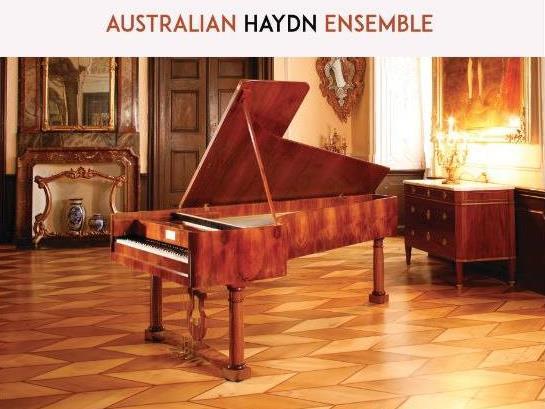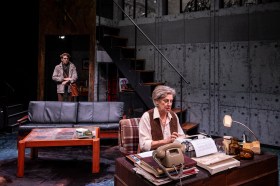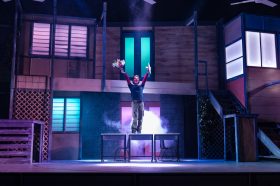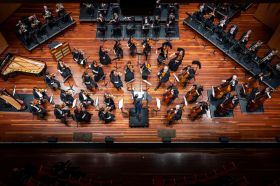This latest recording project from the Australian Haydn Ensemble and fortepianist Neal Peres da Costa of chamber arrangements of Beethoven’s Piano Concertos Nos 1 and 3 provides us with a genuine cause for celebration. Peres da Costa’s last recording with Ironwood creatively explored the performance practice of late-Romantic chamber repertoire through the chamber music of Johannes Brahms. His research program at the University of Sydney continues, here shared with the stylish young Sydney-based Australian Haydn Ensemble playing chamber arrangements of these two popular concertos on 18th-century instruments. Both works were composed in Vienna as the German newcomer from Bonn was beginning to establish his reputation as a composer and pianist of star quality in Europe’s cultural capital.
These effective and elegant arrangements of the orchestration for a string sextet and a single flute are by Vi King Lim, based on two early 19th-century publications by two London-dwelling Italians, Giambattista Cimador and Girolamo Masi. In the hands of this octet of fine musicians, they convincingly argue a connection and yet a marked difference between Beethoven and his teacher Franz Joseph Haydn, particularly in the first less radical Concerto. The cadenza of the Piano Concerto No 1 is composed by the soloist himself, while the usual Beethoven cadenza is used for the 3rd Concerto, although it sounds quite different on this historic instrument.
The beautiful fortepiano is by the Czech Republic-based American Paul McNulty after an instrument by Conrad Graf (c1819) whose instruments Beethoven held in the highest esteem. Given the many possible adjustments of voice by means of its innovative technology, the sound of this instrument is especially pleasing, warm in the bass and delicate in the treble.
Neal Peres da Costa describes his exploration of the instrument as follows:
‘The ethereal (gossamer) sound is created using the una chorda shift pedal which shifts the hammers down to one string from three (tre corde) – a proper una chorda shift. Una corda shift pedals were available on Viennese pianos increasingly in the first decade of the 19th century. Beethoven’s Graf Viennese-action grand piano (on loan to him from Graf in 1826) had a damper pedal, una corda shift pedal and moderator pedals. On our recording I use the una corda whenever the music is incredibly soft and special in harmonic quality. But I also use the moderator pedal (which is effected by a piece of velvet coming between the hammers and strings) to mute the sound whenever the marking is dolce or the feeling of the music is of a dolce character. Sometimes I use it when the marking is pp. There are choices to be made here depending on character, whether the passage is solo or being accompanied and so on. But certainly the una corda produces an ‘other-worldly’ effect while the moderator produces sweetness.’
Added to this we have an ensemble performance style that savours expressive portamento between notes (slides on strings as opposed to shifts), vibrato that is used only sparingly as an ornament, a legato bowing style using Classical bows, elasticity of phrasing and articulation, sometimes surprising tempo changes that delineate extreme mood changes, ornamental arpeggiation of the thematic material, as well as a technique called ‘dislocation’ whereby the melody is lyrically separated from the accompaniment.
Neal Peres da Costa goes on to argue in his excellent annotations that during the early 19th Century a routine performance of Beethoven strictly obeyed the markings on the score but that it was established custom for a virtuosic reading, like this one, to take well-judged liberties. This leads to a wonderful expressive buoyancy and playfulness, particularly in the Rondo, Allegro scherzando of the first Concerto. The touching, almost rapturous tenderness in the Largo movements of both works are other highlights.
Certainly, I have not heard these works sound fresher nor more engaging. This new recording is an outstanding achievement.
4 ½ stars out of 5
Beethoven Piano Concertos 1 & 3 (chamber versions)
Australian Haydn Ensemble
Skye McIntosh, artistic director and violin
Matthew Greco, violin
Gabrielle Kancachian, viola
James Eccles, viola
Daniel Yeadon, cello
Jacqueline Dossor, double bass
Melissa Farrow, flute
with
Neal Peres da Costa, fortepiano





